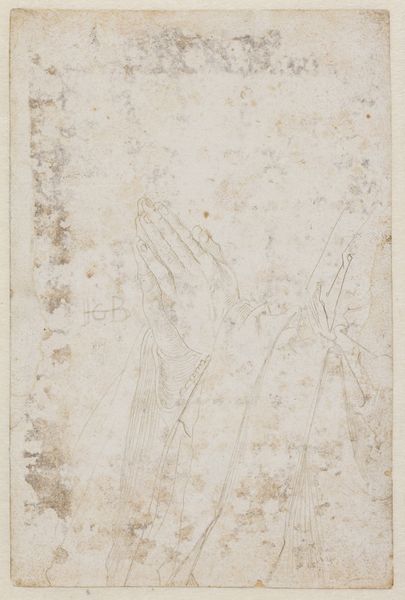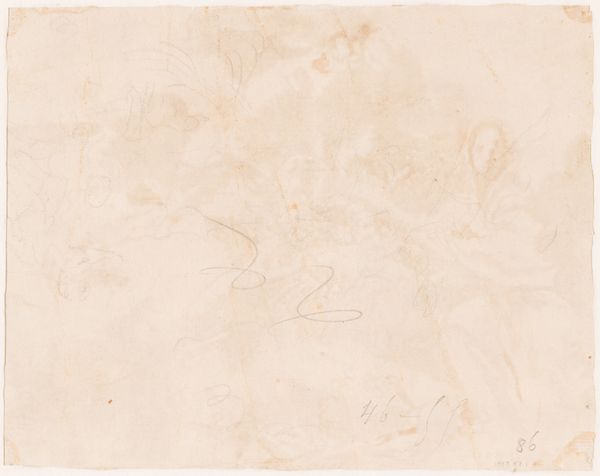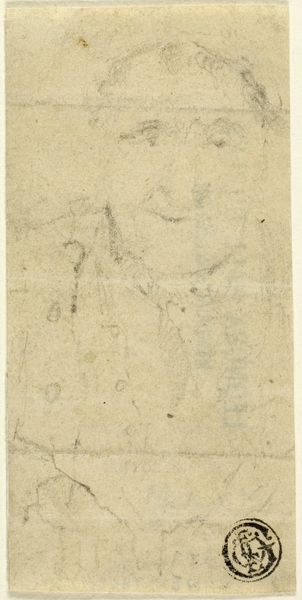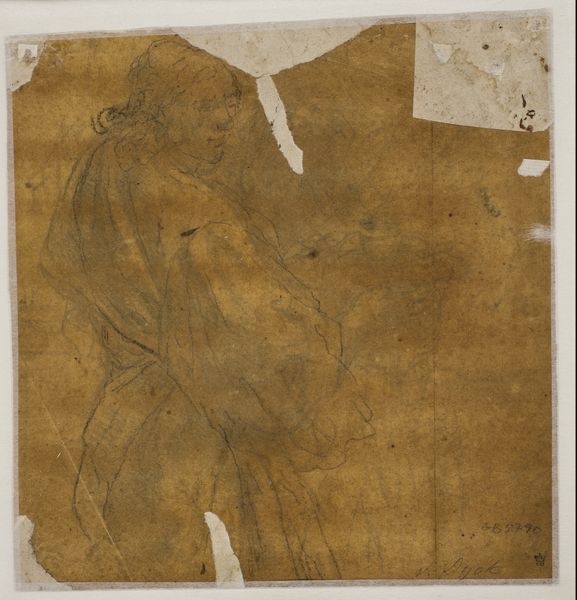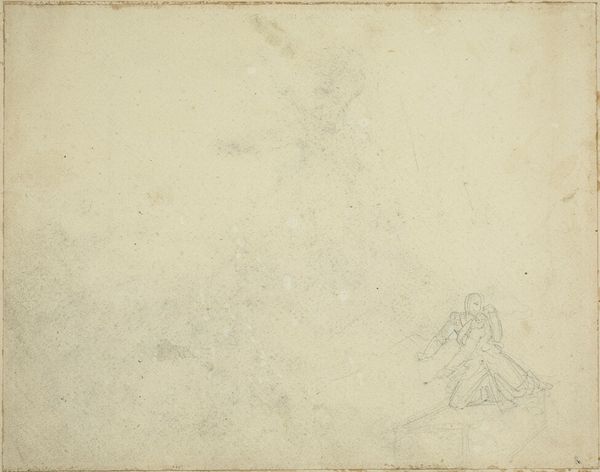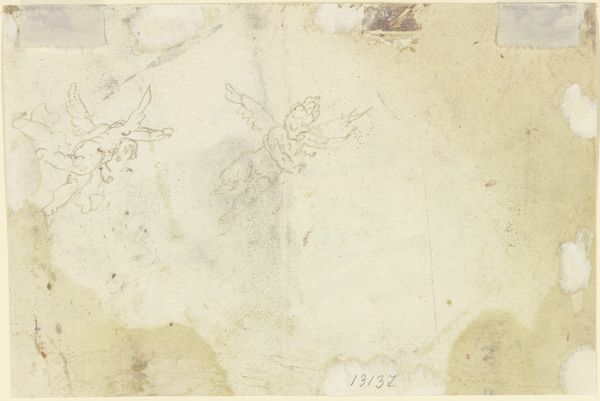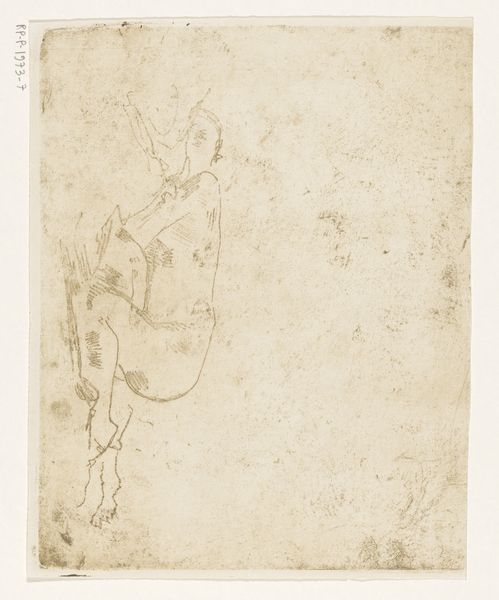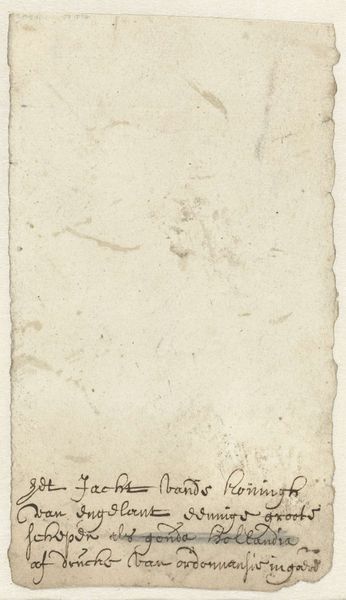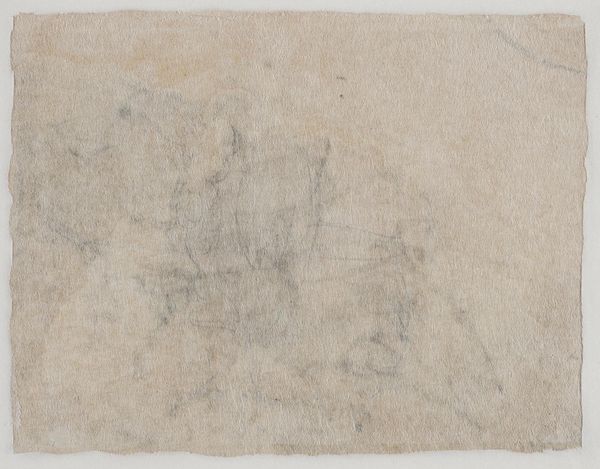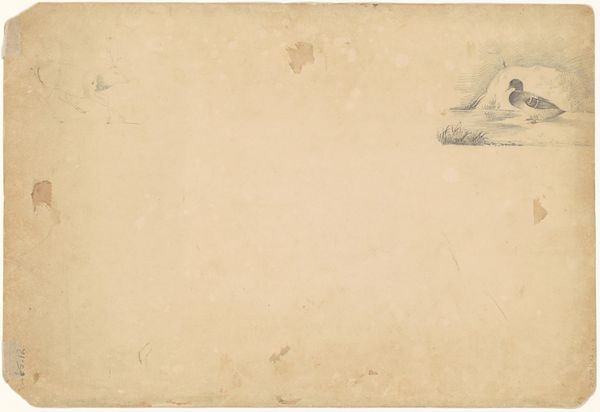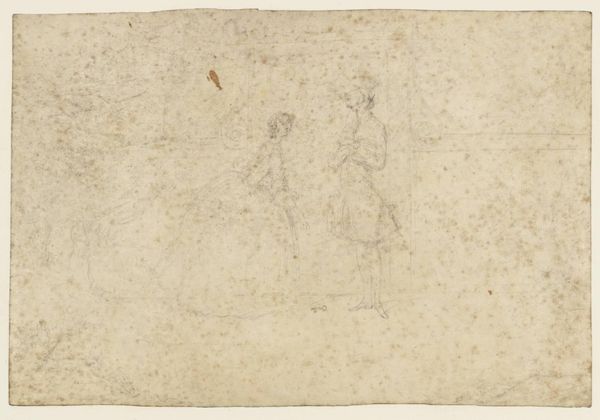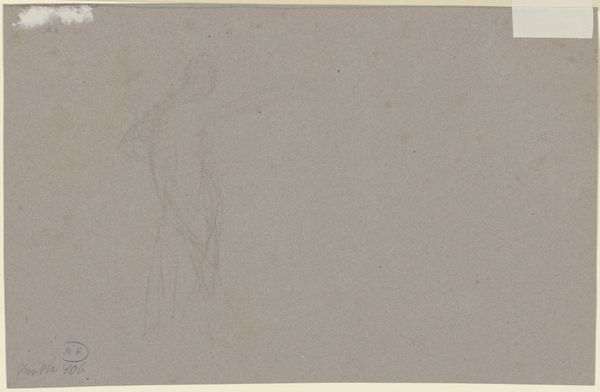![Sketch of a Standing Man [verso] by William Sidney Mount](/_next/image?url=https%3A%2F%2Fd2w8kbdekdi1gv.cloudfront.net%2FeyJidWNrZXQiOiAiYXJ0ZXJhLWltYWdlcy1idWNrZXQiLCAia2V5IjogImFydHdvcmtzL2Q2MWUxMjNiLWZhYWUtNDU4My04ODljLWE5OGZjMTg5YjY3MS9kNjFlMTIzYi1mYWFlLTQ1ODMtODg5Yy1hOThmYzE4OWI2NzFfZnVsbC5qcGciLCAiZWRpdHMiOiB7InJlc2l6ZSI6IHsid2lkdGgiOiAxOTIwLCAiaGVpZ2h0IjogMTkyMCwgImZpdCI6ICJpbnNpZGUifX19&w=3840&q=75)
drawing, pencil
#
portrait
#
drawing
#
figuration
#
romanticism
#
pencil
Dimensions: sheet: 14.2 × 13.7 cm (5 9/16 × 5 3/8 in.)
Copyright: National Gallery of Art: CC0 1.0
Curator: This is William Sidney Mount’s 1827 pencil drawing, "Sketch of a Standing Man [verso]". Editor: It has such a fleeting, ephemeral quality. A ghost on the page, really. There is this standing male figure that fades towards the edges of the composition, who is he? Curator: Mount was a prominent figure painter, active primarily in New York during the 19th century. The quickness of the line and the incompleteness of the sketch indicate that it's likely a study for a more developed painting or figure grouping. I think the subject stands in contrapposto, a very common pose that artists from the Renaissance forward employed in the construction of balanced figures. It looks as if there are glimmers of romanticism within its depiction too. Editor: Absolutely. I agree. Considering that, the social and political context is key, isn't it? Who was granted the luxury of representation? A figure study like this – what narratives are omitted through its focus? The romantic ideals seem complicated when we realize who got left out of its visual language and rhetoric. Who was considered beautiful? What was deemed appropriate for visual expression? Curator: Undoubtedly, it provides an important reference for the era. It displays this interest in form, line and movement. The lack of firm outline pushes our eye around, as well. You will see areas such as around the head and legs, with the appearance of a second or third reworking of contour line and positioning. The medium contributes so much here too – the rough tooth of the paper allows for an interesting level of light capture too, with varied visual textures and an almost atmospheric sense of depth. Editor: I keep thinking about accessibility. A sketch like this provides a peek into artistic processes often obscured by more ‘finished’ works. Who had access to creating and viewing art? These seemingly straightforward lines carried – and continue to carry – complex legacies of inclusion and exclusion. These social values shaped perceptions of not only the depicted man but the role of male citizens at that time, I am sure. It is good for us to keep that conversation going. Curator: It really provides an intimate glimpse into the artist’s process, a window onto the ways images are composed of formal properties and structural motifs that can inform so many images. Editor: Agreed. It's a compelling glimpse. One thread in a much larger, still unraveling, tapestry of art and culture.
Comments
No comments
Be the first to comment and join the conversation on the ultimate creative platform.
